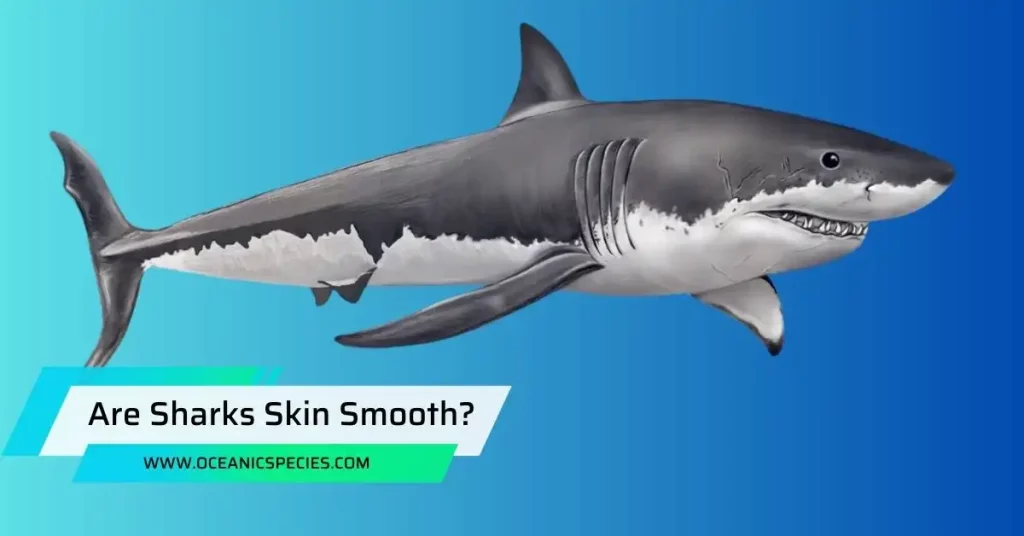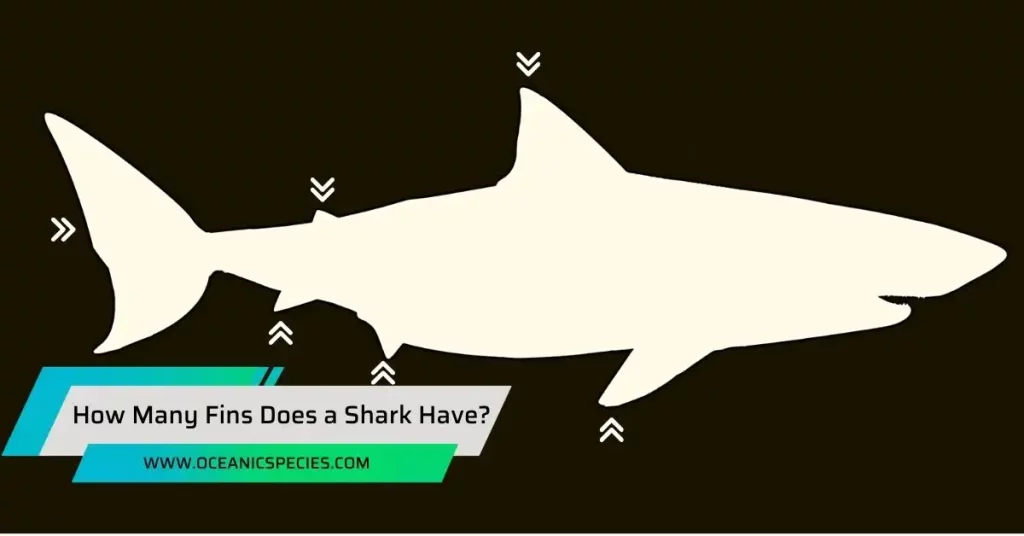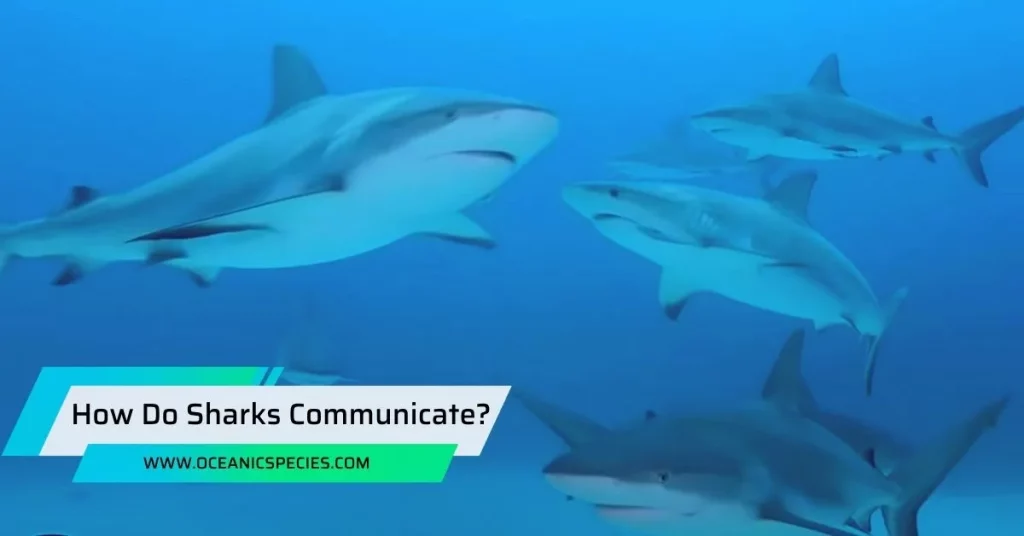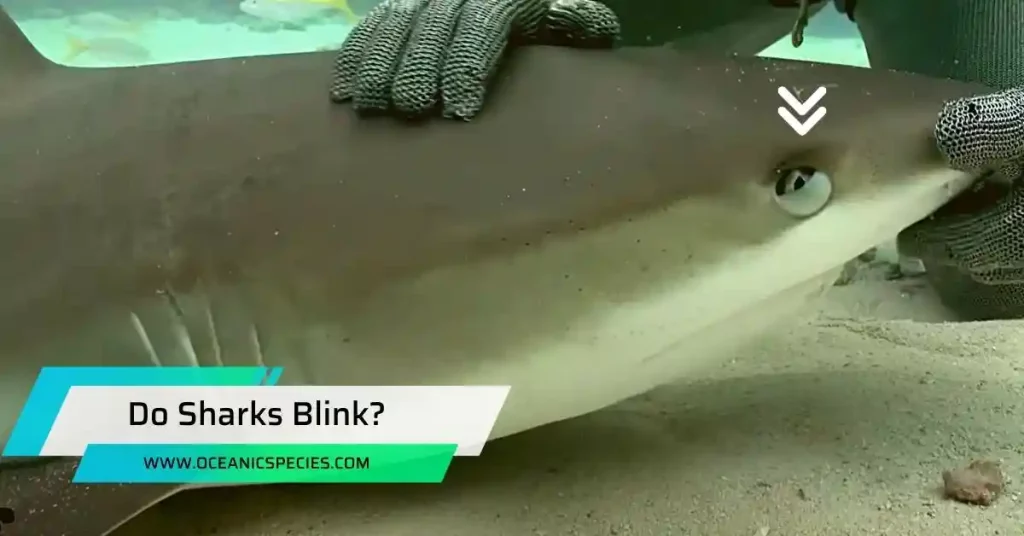Sharks attack humans due to mistaken identity and the presence of blood in the water. These apex predators are known to rely on their senses to find prey, and sometimes, they may misidentify humans as their usual food sources.
Additionally, if there is blood or other strong odors in the water, it can attract sharks, leading to potential attacks. It is important for individuals to understand the factors that can provoke shark attacks in order to minimize the risk and ensure safe interactions in their natural habitats.
Despite these occasional incidents, it’s crucial to remember that sharks play a vital role in maintaining the balance of marine ecosystems.
The Fascination With Shark Attacks
Our fascination with shark attacks stems from a myriad of factors, including primal fears, media portrayal, and public perception. While it is important to acknowledge and appreciate the power and danger associated with these incidents, it is equally crucial to approach the topic with a balanced understanding.
The Allure Of Shark Attacks
Shark attacks evoke a primal fear within us, playing on our deep-seated anxieties. The rarity and unpredictability of these attacks add to their mystique and captivate our attention. The power and aggression displayed by sharks during an attack make for a thrilling and sometimes terrifying spectacle. The survival stories of individuals who have experienced shark attacks often invoke admiration and curiosity.
Media Portrayal Of Shark Attacks
The media plays a significant role in shaping public perception of shark attacks. Sensationalized headlines and dramatic imagery tend to dominate coverage, leading to a heightened sense of fear and danger. The focus on graphic details and personal stories can distort the reality of shark attacks, leading to misconceptions about their frequency and severity. Sharks are often portrayed as mindless killing machines, perpetuating stereotypes that contribute to negative public sentiment.
Public Perception And Fear
Shark attacks are statistically rare, with a low probability of encountering a shark while in the ocean. However, the media’s portrayal of shark attacks has fueled a pervasive fear that can impact public attitudes and behavior. The perception of sharks as bloodthirsty predators has led to detrimental consequences such as increased shark hunting and the culling of shark populations. This fear and misunderstanding hinder conservation efforts and hinder our understanding of these vital marine creatures.
Evolutionary Traits That Lead To Shark Attacks
Evolutionary traits play a significant role in shark attacks on humans. Sharks’ predatory behavior, their keen sense of smell, and instances of mistaken identity all contribute to these rare incidents. While such attacks are a cause for concern, it is important to remember that sharks are essential for maintaining balance in the marine ecosystem.
Predatory Behavior In Sharks
Sharks are apex predators, meaning they are at the top of the marine food chain. As predators, they exhibit certain behaviors that contribute to their attacks on humans. They are constantly on the lookout for prey and will investigate any potential food source that comes their way. Sharks have specialized sensory organs called ampullae of lorenzini that can detect electrical signals emitted by living organisms. This helps them locate potential prey even in low-light conditions or murky water. They have an extremely keen sense of smell, with some species able to detect a drop of blood in the water from several miles away. Sharks are opportunistic feeders and will take advantage of any available food source, including humans.
Shark’S Keen Sense Of Smell
Sharks possess a highly developed olfactory system, which provides them with an excellent sense of smell. They can detect small amounts of chemicals in the water, including the scent of blood, urine, or other bodily fluids. This ability allows sharks to locate injured or distressed prey from great distances. In some cases, the smell of a human’s sweat or urine may be mistaken by a shark as that of injured prey, leading to an attack.
Mistaken Identity: Cases Of Mistaken Identity Leading To Attacks
While sharks may attack humans, most incidents are cases of mistaken identity. Surfers, swimmers, and divers who are in the water often resemble the silhouette and movements of seals or sea lions, which are natural prey for sharks. In situations where visibility is poor or the shark’s senses are heightened (e.g., during feeding or mating), a shark may mistake a human for its intended prey. Additionally, splashing, erratic movements, or shiny objects such as jewelry can further attract sharks, leading to mistaken identity attacks.
Environmental Factors Contributing To Shark Attacks
Environmental factors play a critical role in shark attacks on humans. Increased human presence in shark habitats, the impact of climate change on shark behavior, and the disruption of shark food sources due to overfishing all contribute to these incidents.
Let’s delve into the key factors that make sharks more likely to interact with humans in a way that may result in an attack.
Increased Human Presence In Shark Habitats

Oceans have become increasingly crowded due to the growing popularity of water-based activities such as swimming, surfing, and diving. As a result, humans are encountering sharks more frequently, increasing the chances of an interaction. Coastal development and tourism have led to the expansion of human settlements near shark habitats, bringing people closer to these majestic creatures’ natural environments. The rise in waterfront activities and infrastructure has unintentionally encroached upon traditional feeding grounds and migratory routes of sharks, leading to more encounters with humans.
Effect Of Climate Change On Shark Behavior
As the earth’s climate changes, so do the behaviors of marine species, including sharks. Rising water temperatures and changing ocean currents have an impact on the distribution and behavior of sharks. Some species may be forced to explore new areas in search of suitable feeding grounds. Changes in climate can also affect prey availability for sharks, potentially altering their feeding patterns and increasing the likelihood of interactions with humans.
Impact Of Overfishing On Shark Food Sources
Overfishing has disrupted the delicate balance of marine ecosystems, particularly affecting the availability of food sources for sharks. Sharks rely on a variety of marine animals as their prey, including fish, seals, and sea turtles. However, overfishing has caused a decline in these prey populations, forcing sharks to search for alternative food sources. As sharks seek alternative prey, they may come into closer proximity with humans who are engaged in fishing or other water activities, increasing the chances of encounters and potential shark attacks.
Understanding Shark Behavior And Aggression
While the occurrence of shark attacks is relatively rare, it is essential to understand the key factors that contribute to these incidents. By delving into the intricacies of shark behavior and aggression, we can gain valuable insights into why these events may occur.
Social Behavior Among Sharks
Sharks are not solitary creatures; in fact, they exhibit a diverse array of social behaviors. Shark species range from highly social to solitary. For instance, the great white shark is known to exhibit solitary habits, while other species, such as the scalloped hammerhead, form large schools. Social behavior among sharks can vary depending on factors such as mating, feeding, and territoriality. Communication among sharks occurs through various methods, including body language, chemical signals, and even electrical signals.
Feeding Habits And Hunting Techniques
Sharks are top predators in their marine ecosystems, and their feeding habits and hunting techniques play a significant role in their behavior. Sharks are opportunistic predators, meaning they will feed on a wide range of prey, including fish, seals, sea lions, and even marine mammals. Many sharks rely on ambush tactics to capture their prey, utilizing their exceptional speed and streamlined bodies to surprise their victims. Some shark species, such as the great white shark, engage in “test bites” to investigate potential prey before fully committing to an attack.
Territoriality And Aggression
Territoriality and aggression are factors that can influence shark behavior and may contribute to attacks on humans. Sharks have specific territories and migration patterns, which can lead to encounters with humans in areas where they frequent. Territorial disputes among sharks can occur, particularly during mating seasons or when competing for resources. Shark aggression towards humans is often a case of mistaken identity, where the shark confuses a human with its usual prey due to factors such as visibility or water conditions.
Cases Of Provoked Shark Attacks
These are instances where human behavior is known to have triggered the shark’s aggressive response. Understanding these cases can shed light on the importance of responsible behavior around sharks and the need to respect their natural habitats.
Interactions Between Humans And Sharks
Despite their reputation, sharks generally do not seek out humans as prey. They are curious creatures that may investigate unfamiliar objects or creatures in their environment, including humans. Most interactions between humans and sharks are non-threatening and result in no harm to either party. Sharks rely primarily on their senses, especially smell and electroreception, to locate prey. Sometimes, these senses can be mistaken or aroused by human activities, leading to unintended encounters. It’s essential to remember that sharks are simply responding to their environment and instincts. The majority of shark attacks on humans are cases of mistaken identity. When sharks encounter unfamiliar objects, they may bite or investigate to determine if it is prey or a potential threat. Unfortunately, this can result in injuries to humans.
Dangers Of Feeding Or Baiting Sharks
Feeding or baiting sharks may disrupt their natural feeding patterns and influence their behavior. When sharks associate humans with food, it can lead to dangerous situations. Regular feeding or baiting of sharks can condition them to approach humans and boats, increasing the likelihood of aggressive encounters. This behavior can put both humans and sharks at risk. Feeding sharks also creates an unrealistic perception of human-shark interactions, leading people to believe that sharks are harmless or can be controlled. This misconception can be dangerous and might contribute to complacency around sharks.
Importance Of Respecting Shark Habitats
Sharks play a vital role in maintaining the balance of ocean ecosystems. As apex predators, they help regulate populations of other marine species. It is crucial to respect their habitats and ensure their survival. Destruction of coastal habitats and pollution in the oceans impact shark populations. When their habitats are compromised, sharks may venture into areas they would typically avoid, increasing the chances of human encounters. Contributing to conservation efforts and advocating for the protection of shark habitats is essential. By minimizing our impact on their environment, we can coexist with sharks more harmoniously.
Strategies For Minimizing Shark Attacks
Understanding why sharks attack humans is crucial in implementing strategies to minimize such encounters. By researching shark behavior and migration patterns, implementing shark monitoring and early warning systems, and educating beachgoers about shark safety, we can significantly reduce the risk of shark attacks.
Research On Shark Behavior And Migration Patterns
Sharks are intelligent creatures with their own set of behaviors and migratory patterns. Learning more about these aspects can provide valuable insights into why they may come in contact with humans. Key points to consider include:
- Investigating the factors that attract sharks to certain areas, such as food sources or mating grounds.
- Understanding the seasonal patterns of shark migration and how they impact encounters with humans.
- Conducting research on specific shark species to determine their preferred habitats and behaviors.
Implementing Shark Monitoring And Early Warning Systems
Early detection and warning systems play a crucial role in minimizing shark attacks. By leveraging technology and human intervention, we can actively monitor shark activity and alert beachgoers when necessary. Here are some important strategies:
- Setting up surveillance systems, such as aerial patrols or underwater cameras, to monitor shark behavior in real-time.
- Utilizing sonar technology to detect the presence of sharks in popular swimming areas.
- Employing trained professionals, such as lifeguards or marine biologists, to actively monitor shark activity and warn beachgoers when necessary.
Education And Awareness Campaigns For Beachgoers
One of the most effective ways to reduce shark attacks is by educating and raising awareness among beachgoers. By providing comprehensive information and promoting responsible behavior, we can empower individuals to make informed decisions while enjoying the ocean. Consider these educational initiatives:
- Publishing brochures or online resources that outline shark safety tips and guidelines for beachgoers.
- Organizing workshops or seminars to educate individuals about shark behavior and how to respond in a potential encounter.
- Collaborating with local authorities, schools, and community organizations to implement awareness campaigns that reach a wide audience.
The Future Of Shark-Human Interactions
As we move forward, it is imperative that we continue to prioritize the well-being of sharks and the safety of humans. Through advancements in shark tracking technology, conservation efforts to protect their habitats, and a commitment to balancing human enjoyment of the ocean with shark safety, we can foster a future where sharks and humans coexist in harmony.
Advancements In Shark Tracking Technology:
- Satellite tagging: This technology enables scientists to track the movements of individual sharks over vast distances, providing valuable insights into their behavior and migratory patterns.
- Acoustic tagging: By attaching acoustic tags to sharks, researchers can monitor their movements in real time using underwater receivers, allowing for a more comprehensive understanding of their habitat usage.
- Drone surveillance: Unmanned aerial vehicles equipped with cameras and sensors are increasingly being used to monitor shark populations in coastal areas, providing a non-intrusive method of data collection.
Conservation Efforts To Protect Sharks And Their Habitats:
- Marine protected areas: The establishment of marine protected areas helps safeguard critical shark habitats, allowing their populations to thrive and ensuring the preservation of essential ecosystems.
- Shark finning bans: Many countries have implemented strict regulations to prohibit shark finning, a practice that involves removing a shark’s fins and discarding the rest of the body, leading to a significant decline in shark populations.
- Public awareness campaigns: Educating the public about the importance of sharks and their role in ecosystem balance is crucial for promoting conservation efforts and dispelling misconceptions.
Balancing Human Enjoyment Of The Ocean With Shark Safety:
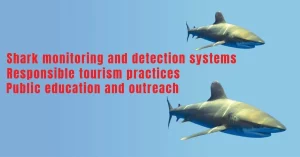
- Shark monitoring and detection systems: Developing and implementing advanced technologies, such as shark detection buoys and sonar systems, can help warn swimmers and surfers of the presence of sharks, reducing the risk of interactions.
- Responsible tourism practices: Encouraging responsible behavior among beachgoers and water sports enthusiasts, such as avoiding shark feeding activities and respecting the natural environment, can contribute to safer interactions with sharks.
- Public education and outreach: Promoting awareness about shark behavior, safe swimming practices, and the importance of respecting sharks’ natural habitats through educational programs and signage can help minimize potential conflicts.
Frequently Asked Questions
What Attracts Sharks To Humans?
Sharks can be attracted to humans due to splashing, the smell of blood, or mistaken identity.
Are Humans The Preferred Prey For Sharks?
No, sharks generally do not consider humans as their preferred prey and prefer marine animals instead.
How Can Humans Avoid Shark Attacks?
By avoiding areas where sharks are known to be present, refraining from excessive splashing in the water, and not swimming alone at dawn or dusk.
Can Shark Attacks Be Prevented?
While shark attacks cannot be completely prevented, awareness, education, and responsible behavior can reduce the risk.
Conclusion
Overall, understanding why sharks attack humans is a complex issue that cannot be attributed to a single factor. While some attacks may be a case of mistaken identity, others could be due to territorial behavior or curiosity. It’s crucial to note that the number of shark attacks on humans is relatively low compared to other risks we face daily.
Nonetheless, it’s essential to respect these creatures’ natural habitats and take precautions when entering the ocean. Through proper education, research, and conservation efforts, we can continue to learn more about sharks and foster coexistence between humans and these fascinating creatures.


